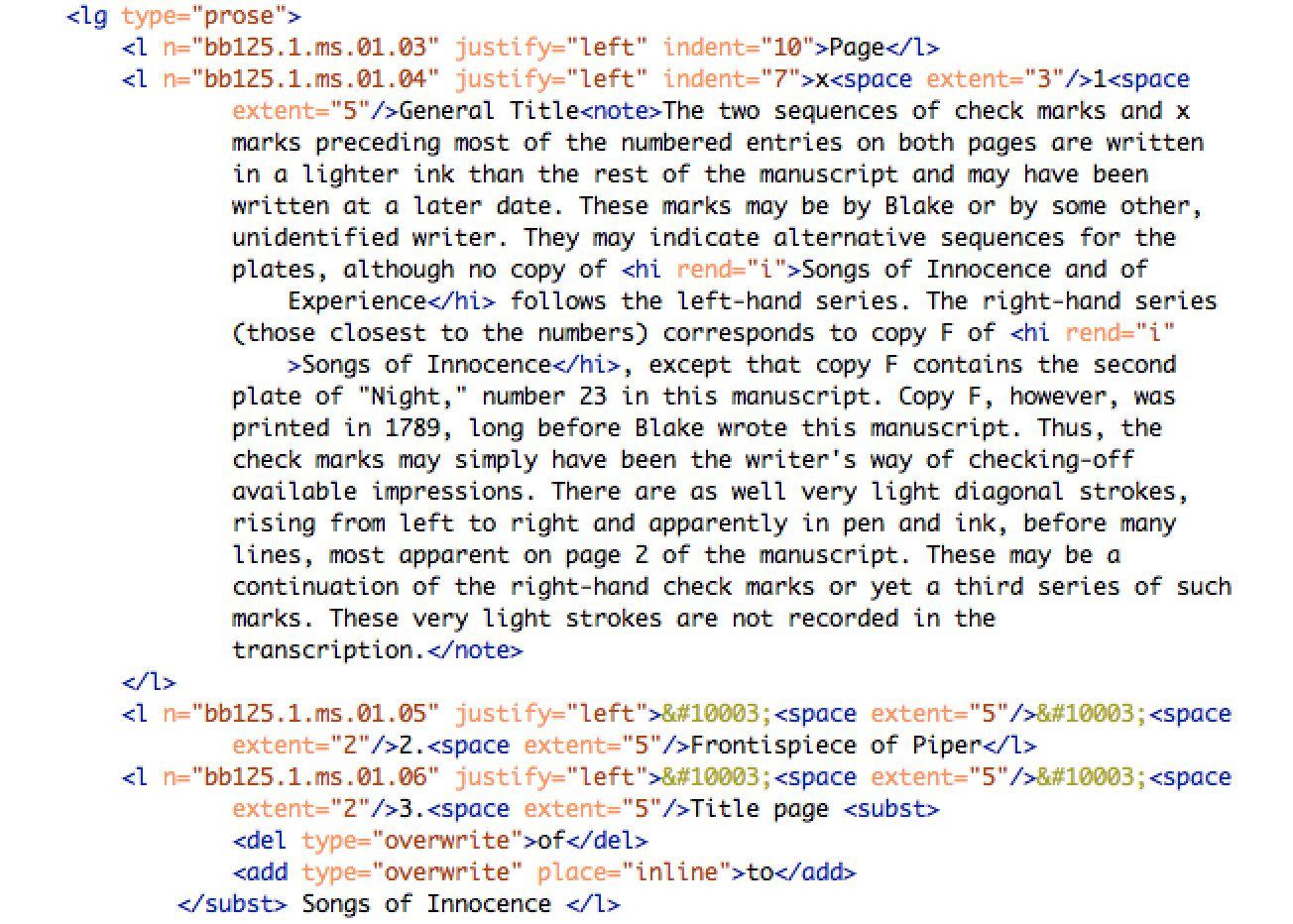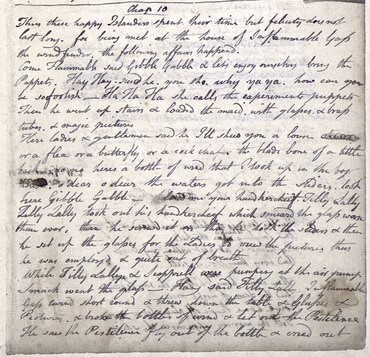An article has just been published in the very first issue of the new journal, Digital Literary Studies called “Encoding the Edge: Manuscript Marginalia and the TEI” by Laura Estill. Nothing could be more timely, given BAND’s new project to encode Blake’s marginalia, and I’m sure that we’ll be referring to this paper over and over again as we press on with our task.
The opening of the article is a brief discussion of the particular problems when considering marginalia in a digital edition. Estill writes, “encoding raises questions about the definition of text, body, and marginalia itself. Ultimately, encoding marginalia is a datamodeling question that asks us to rethink the nature and function of our texts and paratexts, questioning where one ends and the other begins.”
The Blake Archive’s editorial ethos is especially interesting in this context because we frequently transcribe and encode material that could be considered paratextual. For example, the oft-discussed running headers and page numbers in typographical works, or even the check marks that Andrea meticulously included as she worked on the digital edition of The Order in which the Songs of Innocence & of Experience ought to be paged & placed. In this particular example, the marks both appear in the transcription and are carefully described in an editorial note.


As you can see from the xml above, the marks were not formally tagged as being “marginalia” or “annotations,” which was the appropriate decision given our current transcription guidelines. However, now that we are focusing more particularly on Blake’s own marginal annotations, the question of creating a specific tag has arisen.
Estill’s comment above has made me think about how complex works like the marginalia (or indeed the Four Zoas) require a digital editor to be constantly flexible in the ways that she understands what parts of a text should and shouldn’t be encoded. When the Blake Archive publishes letters written by Blake that only exist in Alexander Gilchrist’s Life of William Blake, it is the right decision to consider the text that surrounds the letter as external to the transcription, and we therefore do not encode nor transcribe it. This decision has had to be revisited in the marginalia, since including the original text could provide necessary context for a reader and may be important for searching purposes. I’m sure too that we’ll re-revisit these ideas when some other as yet unthought of problem rears its ugly head (yes, Notebook, I’m looking at you).
Instead of blaming our past selves for failing to anticipate the unique problems we might encounter in the future or even just accepting change as part of the natural evolution of our encoding practice, surely embracing a flexible outlook is more helpful? Blake’s corpus is diverse and varied, so it makes sense that our encoding and editorial conventions should be, too.



